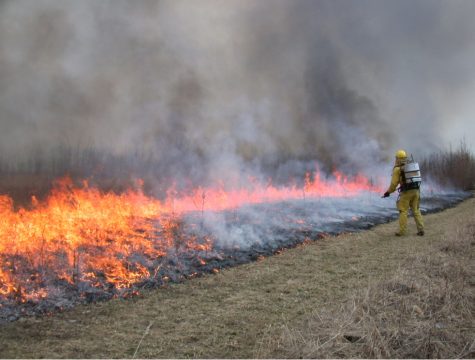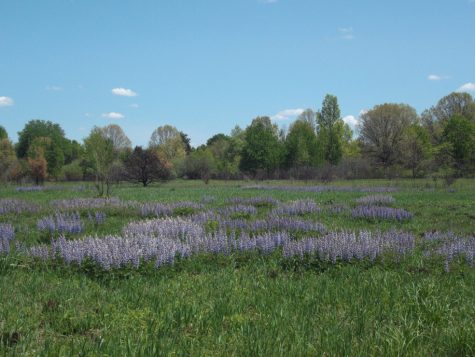Prescribed burn of OU’s biological preserve in April
Ten acres of Oakland University wetlands have been issued a prescribed burn for April, an “experiment” to insight restoration, according to Scott Tiegs, Ph.D., associate professor of biological sciences.
In a panel discussion on Tuesday, March 9, various environmental specialists chimed in about OU’s impending burn.
The biological preserve has “suffered” from an array of problems — poor water quality, decrepit buildings on the preserve and invasive species, according to Tiegs. This is a common occurrence in preserves surrounded by urban environments.
For instance, Galloway Creek has experienced increased salt content from runoff and some pollution. Tiegs said the abandoned buildings on the preserve can become “wildlife traps.” Additionally, many trees and grasslands are being lost to invasive species — specifically, thousands of dead ash trees due to the emerald ash borer.
Britt Rios-Ellis, executive vice president for academic affairs and provost, advocates for the burn because of her personal experience from Carmel fires in California.
“I speak from direct experience… In fact, controlled burning may have been able to prevent the fires that ravaged the western U.S. in 2020,” Rios-Ellis said. “The truth is the controlled application of fire to contain ecosystems by experts… [and] the Native American populations — who originally populated this land — have long been demonstrated as beneficial in many ways.”
Controlled burns can prevent future wildfires from happening and reignite the environment, helping indigenous species. This is done by removing excess or anything that’s hindering the health of the environment and allowing more growth after.
Plantwise LLC, a company specialized in ecological restoration, will be executing the burn next month. Owner Dave Mindell has initiated restoration through burning, Tiegs feels “comfortable” because of his experience.

“He has done a thousand burns today, and he’s never filed an insurance claim,” Tiegs said.
The burn is sponsored by the Center for Credentialing and Education, the Campus Alliance for Sustainability and the Environment, the College of Arts and Sciences and the Oakland University Department of Biological Sciences
There is not a specific date set for the burn yet because burners will need to consider weather conditions, ensuring safety. Additionally, Tiegs ensured plants and animals would be safe during the burn too because this is a “fire-adapted landscape” — the fire focus would be dense and invasive brush.
“The animals that live on our campus are fire adapted,” Tiegs said. “They have ways to get away from the fire — they can burrow… The plants are still relatively dormant.”
Ten acres will be burned, but there will also be five control plots to compare and learn from the burn. This burn will be an “experiment” to plan for the future and give students the opportunity to research a restorative burn.
“We have some really nice habitats on our campus,” Tiegs said. “I feel really fortunate that we have these… the presence of these and other ecosystems on campus really contributes to the OU mission as it relates to teaching, research and outreach.”

OU’s wildlife preserves have been a resource for students for years, making its preservation a priority. In fact, Tiegs was drawn to OU because of the extensive preserves.
“This is one of our classrooms, and I don’t think there’s really an adequate substitute for fieldwork,” Tiegs said. “I consistently hear from students that their field experiences on the preserve are among their most memorable educational experiences.”








